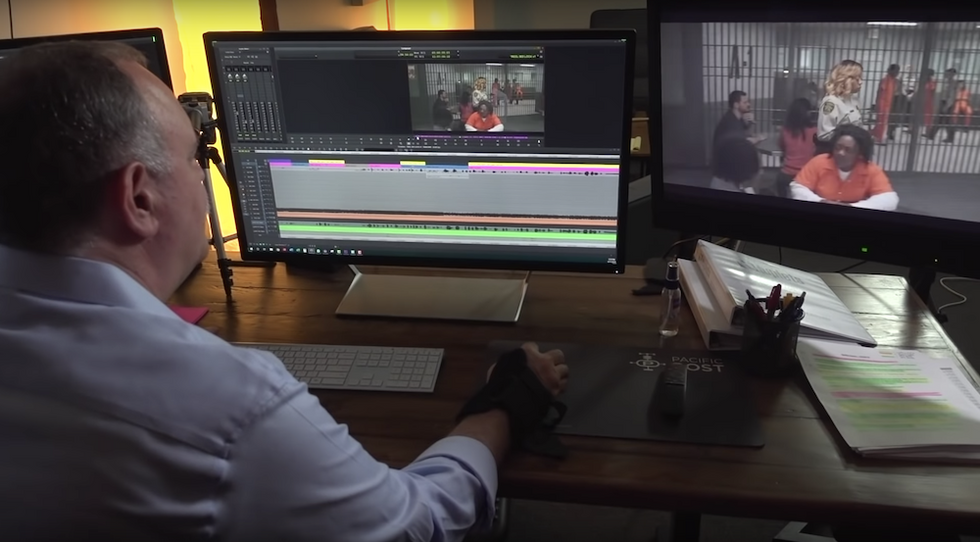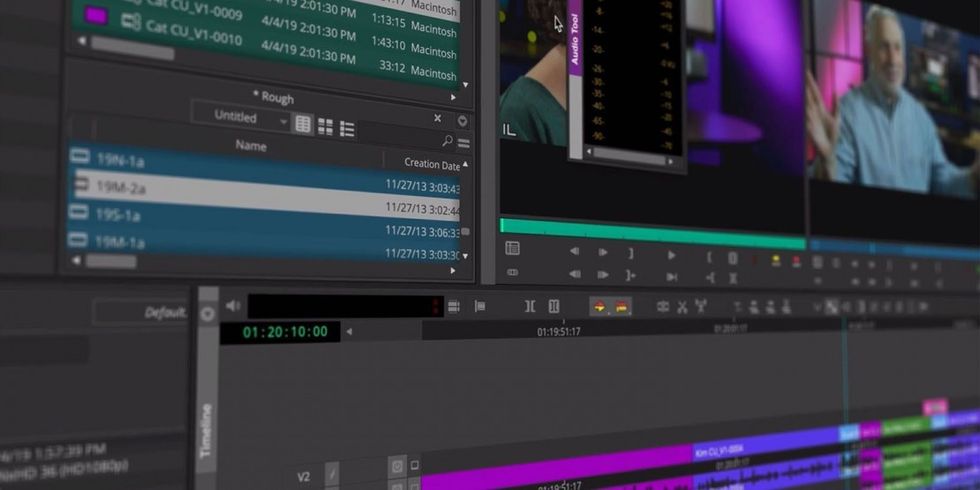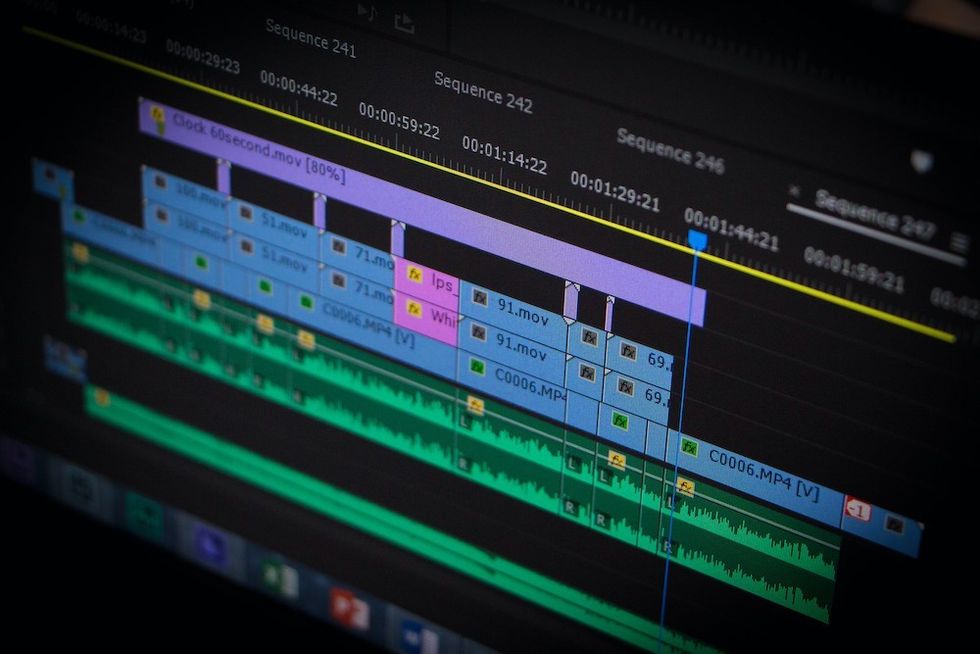4 Easy Steps for Growing Your Video Editing Career
Ready to jump into an editing career but aren't sure where to start? These tips should help.

There has never been a better time to enter the film and video editing industry. Streaming services and social media have ushered in a proliferation of new content that’s being created for a variety of mediums, which means the industry is ripe with opportunity.
In fact, the Bureau of Labor and Statistics projects the industry will grow by 11% through 2028. That’s much faster than the average growth rate for all occupations. They attribute this growth to the number of Internet-only platforms being introduced into the market, which is leading to more shows that need producers, camera operators, and of course, more editors.
However, with these opportunities come new challenges, too. And, the bar for talent has been set higher than it has ever been, especially as technology continues to evolve, and the competition fueled by the ongoing “streaming wars” introduces new salary and compensation models.
Netflix, for instance, has already looked into offering bonuses for films that win awards or pull in a large number of viewers, so they’ll be looking for the crème de la crème to staff shows. Up-and-coming editors must navigate a much more complex ecosystem of content creation than previous generations. This means they need to develop a skill set that will allow them to work on shows, movies, or online videos that may be created in a variety of different styles and formats.

In the 10 years I’ve been working in the industry, things have changed dramatically. I first discovered my love for filmmaking and editing as a teen. I grew up skateboarding and doing BMX, and you could often find me filming tricks and creating stunt videos with my friends. I soon discovered that it was the filming and editing portion of the hobby that I truly found interesting and wanted to turn that into a career.
When my friends took off for university, I attended a one-year filmmaking and editing course in New Zealand, and shortly after, I landed my first gig on New Zealand’s Top Model. Now in my late 20s, I’m a partner at Burnish Creative, a full-service production and post-production agency that offers offline, graphics, mix, and creative support from concept to delivery.
My editing career has enabled me to work on some incredible projects, too, including America's Got Talent, American Idol, and The Masked Singer, to name a few. I’ve learned a lot throughout the course of my career and have developed a few best practices that young, up-and-coming, and freelance editors can use to quickly grow and advance their careers in today’s competitive and ever-changing landscape.

Instagram and YouTube are Just as Good as a Resume
Today, it’s so important to showcase your work and build a brand online; it’s one of the first things creatives look at when evaluating a potential candidate. By looking at someone’s Instagram feed, you can easily see whether someone has “an eye” or a knack for the job. My personal Instagram has become a place where I showcase some of my latest projects. For instance, I recently shared a snippet of a campaign I worked on for the opener to Netflix’s Hypderdrive.
Under the video clip, my followers can see the video editing software I used (Avid Media Composer), so they can get a behind-the-scenes look at how my team and I pulled it all together. Showcasing projects like this demonstrates the projects that Burnish Creative can take on as well as highlights content I’ve played a direct role in creating. Folks who visit my profile have a clear idea of my capabilities. When I visit a candidate’s profile, I want to have a similar experience.
Stay Late and Ask for Work
In an entry-level job, you might not always get the editing task you want, so sometimes you have to ask for it. And, if they don’t have something for you to do, stay late and ask for access to the tools so you can practice and develop your skills.
At my first gig on New Zealand’s Top Model, I was barely given any editing work. But, I was hungry to get in there and learn as much as I possibly could. I’d often stay late after the rest of the team went home and ask for permission to use the tools so I could practice and stay inspired. They really appreciated the go-getter attitude, and just showing how much I wanted to learn opened more doors for me soon after.
Find Passion Projects
While it’s important to stay busy at your day job and ask for the opportunity to work on new projects, it’s equally as important to pick up passion projects and push yourself creatively in your spare time as well.
I personally find inspiration while I’m traveling and will take the time to create videos from my trips. Platforms like YouTube and Instagram also have so much content that can offer new sources of inspiration. I’m often perusing these sites to see what new tricks and effects my fellow editors are mastering and thinking of new ways I can make the content I’m editing more dynamic and visually appealing.
However, even though it’s fine to seek inspiration and new ideas from others, you must be careful not to rip off other people’s work! There’s a fine line between admiration and stealing, and it can cost you your career. It’s not hard to give credit where credit is due, so always be sure to cite the source of your inspiration.
Learn Tools that Offer Pro-Level Features
Throughout the course of my career, I’ve used Avid. I was introduced to the tool when a 2-day short course rolled through town. I attended and knew it was the editing software I needed to achieve the videos I wanted to create. It’s considered the industry standard for filmmakers and professionals and easily allows bigger teams to collaborate and work with one another on editing projects.
You could, of course, learn other platforms, but I always tell my colleagues that they’re limiting their career trajectory if they do that. Plus, those who are just getting to grips with editing and filmmaking can download the freemium version of their software. This way, new filmmakers can start getting familiar with it without having to make the commitment of purchasing it outright. Once they’re more comfortable with the software, they can upgrade to the paid version at any time. It’s a great option for younger editors who are just starting to figure out the direction they want to go in. I can’t recommend it enough.

These simple tips really helped me when I began my career, and now that I’m in a position where I look for new talent, I can tell you that passion and grit are some of the first things I look for. This industry is always evolving, and while the fundamentals of good storytelling will never really change, up-and-coming editors need to be able to showcase their work and stand out in a crowded space.














